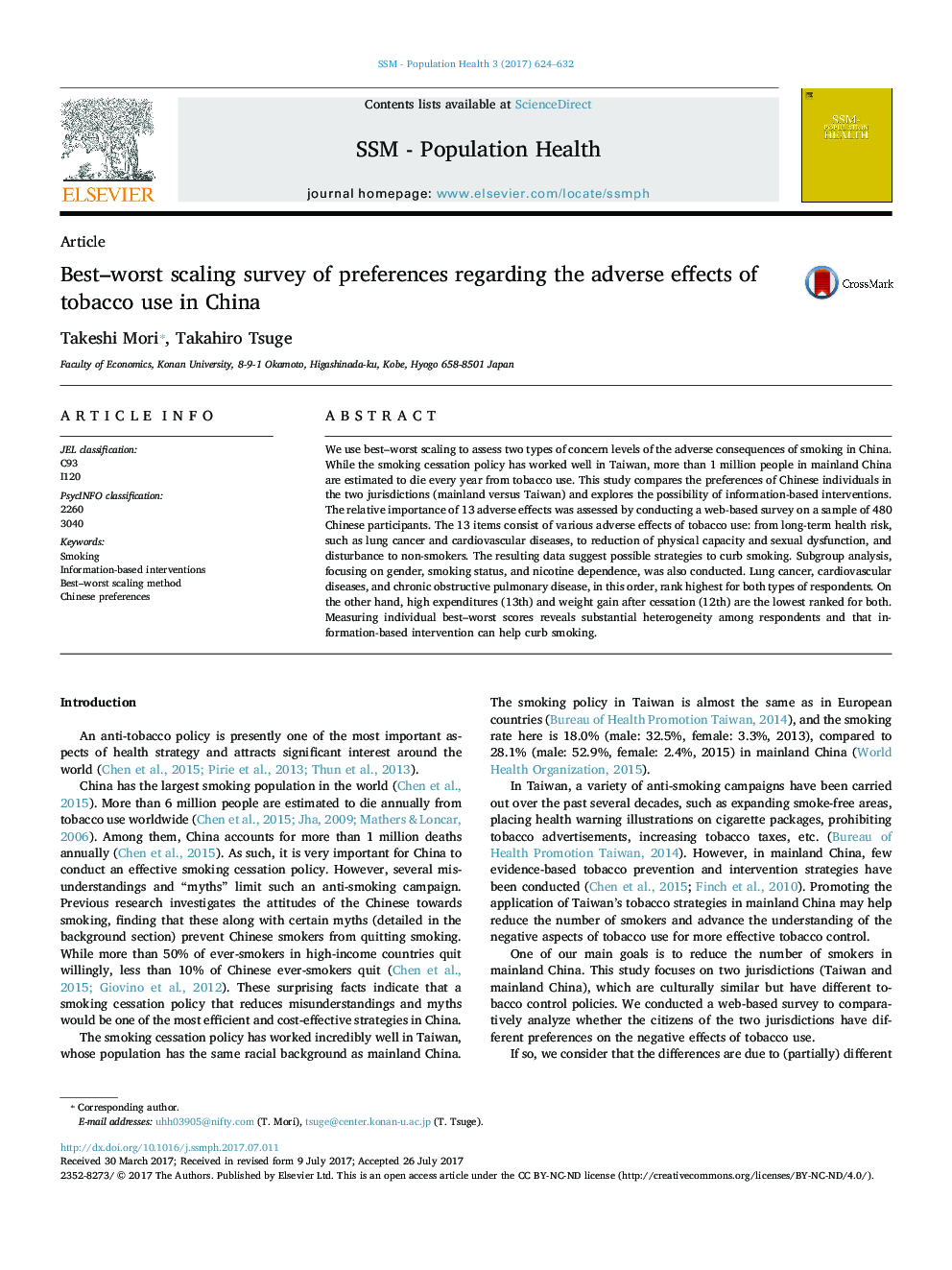| Article ID | Journal | Published Year | Pages | File Type |
|---|---|---|---|---|
| 5123295 | SSM - Population Health | 2017 | 9 Pages |
â¢Best-worst scaling (BWS) is used to assess concerns on tobacco adverse effects.â¢Adverse effects of tobacco are assessed for mainland and Taiwan residents.â¢Lung cancer, cardiovascular diseases, and COPD rank highest for both.â¢Information-based interventions are explored for Chinese smokers.â¢Comparative results provide insights for a future anti-smoking policy.
We use best-worst scaling to assess two types of concern levels of the adverse consequences of smoking in China. While the smoking cessation policy has worked well in Taiwan, more than 1 million people in mainland China are estimated to die every year from tobacco use. This study compares the preferences of Chinese individuals in the two jurisdictions (mainland versus Taiwan) and explores the possibility of information-based interventions. The relative importance of 13 adverse effects was assessed by conducting a web-based survey on a sample of 480 Chinese participants. The 13 items consist of various adverse effects of tobacco use: from long-term health risk, such as lung cancer and cardiovascular diseases, to reduction of physical capacity and sexual dysfunction, and disturbance to non-smokers. The resulting data suggest possible strategies to curb smoking. Subgroup analysis, focusing on gender, smoking status, and nicotine dependence, was also conducted. Lung cancer, cardiovascular diseases, and chronic obstructive pulmonary disease, in this order, rank highest for both types of respondents. On the other hand, high expenditures (13th) and weight gain after cessation (12th) are the lowest ranked for both. Measuring individual best-worst scores reveals substantial heterogeneity among respondents and that information-based intervention can help curb smoking.
